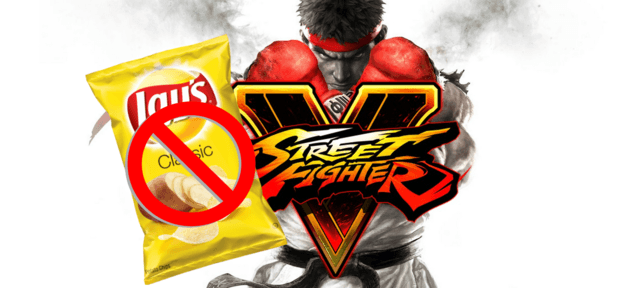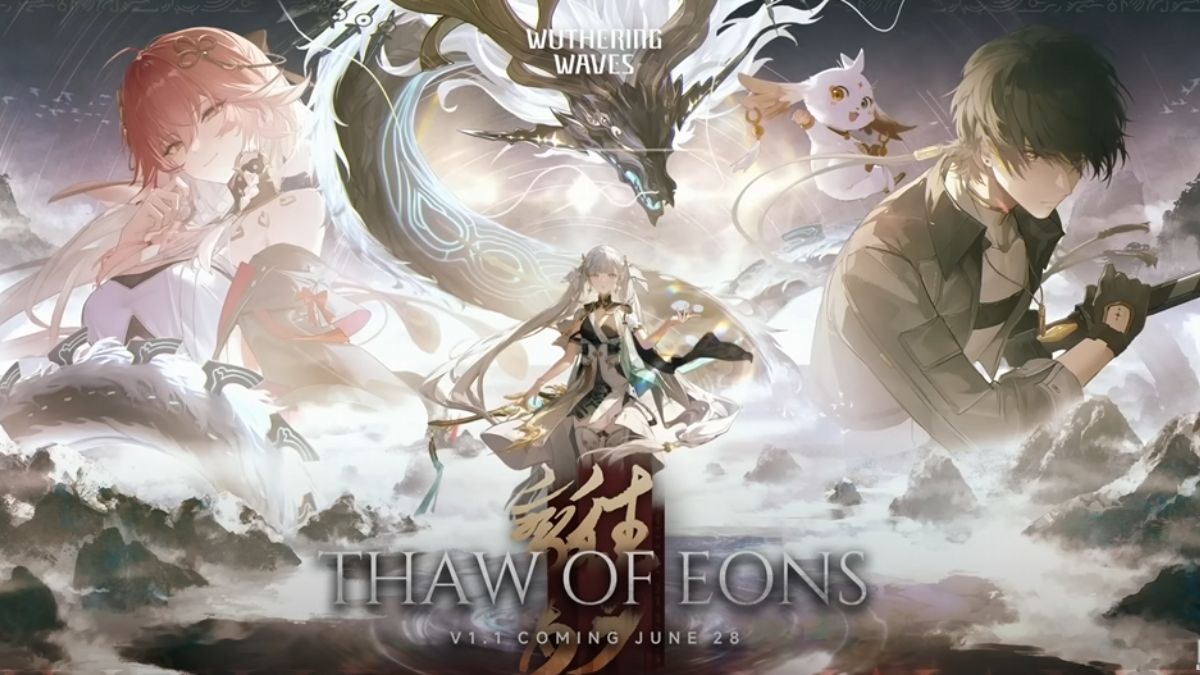I’m not even going to be shy about admitting that I’m slightly biased toward thinking that the upcoming Street Fighter V looks fresh simply because I love fighting games. But my bias notwithstanding, I can give you at least “V” (See what I did there?) reasons why this latest installment in the franchise is truly looking to be a great title.
1. Strictly No Chips Allowed
Have you ever been to a party that didn’t have chips? Probably not, and that’s because most of the time, it’s a relatively defensible argument that a party with no chips is a lame party. Except not this time. See, Street Fighter V is feeling itself, and it thinks that it’s cool enough to host a party with NO CHIPS, and still have it turn out awesome. And you know what? I’m inclined to agree.
See, when I say “chips” in this instance, I’m not talking about everyone’s favorite thinly sliced snack made from fried potatoes. I’m talking about the infamous, incredibly frustrating “C” icon in the round counter below players’ health bars. The Street Fighter series is somewhat unique in that it has a series of symbols that denote the “way” in which you won a round. These include “V” for a standard win using any normal hit in the game, “S” for a Super Combo, “U” for the Ultra Combo introduced in Street Fighter IV, and “C” for a chip damage K.O. But as I stated above, that last one won’t be making a return in V. And while it’s obvious some will disagree, I’d argue that’s a good thing.

No, not that kind of…. *sigh* Nevermind.
I’m going to level with you: I’m guilty of using the “C” when it felt advantageous. I play Akuma and Ibuki, two characters who both have a fantastic projectile attack for dealing good chip damage. But I’ve also been on the receiving end of it many, many times. Honestly, it’s aggravating. What that little “C” in a circle means is that essentially, your opponent made you block yourself to death. You had good defense, and you still lost.
This becomes a real problem when you’re dealing with characters that have a solid pressure game that can essentially lock you down to the point where you feel suffocated. You’re forced to sit there and just block everything they throw at you, the whole time watching your life bar get slowly whittled away, until eventually, you die.
Even when I’m the one bagging the round, a “C” doesn’t feel all that satisfying in most scenarios. I almost feel like a thief. “Yes, you totally blocked my attack, and might have even been able to punish as a result, but too bad, you’re dead anyway! Ha!” Sounds kind of ridiculous, right? Thankfully, that won’t be a problem in Street Fighter V. There will still be chip damage, it just won’t be able to kill you.
2. “U” Are Not Invited
“C” isn’t the only letter being stripped from Street Fighter V’s win condition alphabet. The game is also doing away with the controversial “Ultra Combo” introduced in the IV series of titles, and its associated “Revenge Gauge,” which fills as you take damage. This is a very good thing, because while there’s nothing inherently wrong in having some sort of “comeback mechanic,” the Ultra Combo system is genuinely broken.
When the Revenge Gauge is maxed out, a raw Ultra (raw = not part of a previous combo and therefore not affected by damage scaling) usually does somewhere around 50% damage. That’s FIFTY PERCENT, all for pressing a couple of buttons after getting the stuffing beat out of yourself.
Yes, you could argue that it takes skill to land a raw Ultra against a good player. And you would have a point. But even still, any mechanic that literally does half of your work for you as a reward for doing something you’re supposed to avoid is not a good mechanic. Much as I stated in my previous point, I’m also guilty of getting plenty of “U’s” on my Win card, and I think they LOOK awesome. But that doesn’t mean I can’t acknowledge the flaws in that system, and I’m not all that sad to see them go.

It does mean no more Evil Ryu Maximum Anime Hype Mode though, which is a little sad.
3. One-Frame Link? Sorry, You’re Not On The List
My reaction when I first heard this little detail was an immediate, very loud “YESSS!” One-frame links are the bane of my Street Fighter existence, and I know for a fact that I’m not alone in that regard. Unfortunately, this has produced a rather vitriolic group of dissenters as well, who claim that removing one-frame links from the game turns it into “easy mode,” or a “casual-fest.” I really only have one thing to say back to them: that’s ridiculous.
First of all, when your game practically forces even the best of the best players to make use of an exploit within the engine just to play the game properly, that’s bad. Period. I’m referring of course, to “plinking,” or priority linking, which is a system whereby players input an extra, lower priority input at the same time as their actual input, in order to gain an additional frame on the input window.
Sound complicated and difficult just to grasp, let alone apply? That’s because it is. Basically, it turns a one-frame link into a two-framer, and so on. But once again, this is an exploit, not a “feature.” It was not intended to be in the game; it’s simply a side effect of the input handler.

See all the doubled inputs? This is what plinking looks like. Seriously guys.
Secondly, making it possible for players – both new and old – to actually hit decent combos, without having to act like robots, is not taking away the importance of player skill. Player skill shouldn’t be measured by the number of buttons you can hit per second anyways. It should be measured by decision-making ability, reactions, and the ability to work under pressure.
None of these things are removed from any fighting game by not making it necessary to hit a button within the correct 1/60th of a second. Because that’s what a one frame link is: a situation in which one move, (say, a standing medium punch) can only be successfully chained into another move (we’ll pretend crouching medium kick) in a single particular frame. And when your game runs at 60 FPS, that means one frame=1/60th of a second. See how ridiculous that sounds when put into numbers now?
Hopefully this will allow Street Fighter V to attract a strong player base of people who might have been too intimidated by the absurd skill floor of its predecessors. I for one can’t see how giving us more people to play against could ever be considered a bad idea.
4. SUPER PARTY TIME!
Going hand in hand with what I just said about a lowered skill floor giving us more new players to play against, the announcement of cross-play between both the PS4 and PC platforms is another huge boon to the longevity of this game’s online community. While I do find it slightly unfortunate that Xbox One users won’t have access to this title, the knowledge that everyone who owns it will be able to get together and beat the virtual crap out of each other in one giant slugfest is exciting.
The latest Street Fighter isn’t alone in making a point of cross-play in fighting games either. Earlier this year, the former Xbox One exclusive Killer Instinct reboot was confirmed to be coming to Windows 10 PC, with cross-play between it and the Xbox One platform touted as a major selling point.
5. Hey Guys, Look What I Can Do!
Remember earlier when I said that having a comeback mechanic isn’t automatically a bad thing? Well so far, Street Fighter V looks to be doing a fine job of proving that statement. Like I already mentioned, the Revenge Gauge from Street Fighter IV is no more. Instead, it’s been replaced by the new “V Gauge.” (That’s “vee,” like the letter. Not the Roman numeral.)
Similarly to the Revenge Gauge, the primary method by which you fill this gauge will be to take damage, though some characters, such as Birdie and Nash, have been shown to have other means of doing so. Fill one of your V Gauge stocks, and you’ll have access to the “V Reversal” mechanic, which functions similarly to an “Alpha Counter” from the Street Fighter Alpha series.
Max it out though, and that’s where things get really interesting. A full V Gauge grants you access to your “V Trigger” a character-unique special ability that has the potential to turn the tide of battle. A few examples include Ryu’s Denjin Mode, by which his normal hadoukens become dramatically faster, and he gains the ability to charge them up, and rapidly fill the opponent’s Stun Gauge, or Bison’s Psycho Power transforming him into a deadly, quick teleporting force to be reckoned with.
Observe, as I now cease float-walking at you like a gravity-confused snail!
The V Trigger mechanic does two things very well: First, it accomplishes creating a comeback mechanic that, at least so far, looks dramatically less lopsided and broken than the Ultra Combo system of Street Fighter IV, and second, it creates character variety, even in matchups between similar characters. (Ryu and Ken, anyone?)
The best part is, it’s not the only new feature accomplishing that second task. The always available “V Skill” is another new character-specific feature. For example, Ryu gets the ability to parry attacks, just like in 3rd Strike. Bison and Nash both gain the ability to absorb projectiles, but what they each do with them afterward is a little different, and Birdie….well, he eats food, which allows him to fill a small portion of his V Gauge.
The combination of these two new features allows Street Fighter V to significantly alleviate one of the biggest problems the series as a whole has had since the beginning: a roster that includes many characters with more similarities than differences between one another. Ryu and Ken no longer suffer from being the same basic character with a few minor tweaks, and a host of fellow copycat characters to follow. Street Fighter V is definitely hosting the same party we’ve all come to know, it’s just decided to seriously shake things up a bit this time around.








Published: Aug 3, 2015 08:57 am